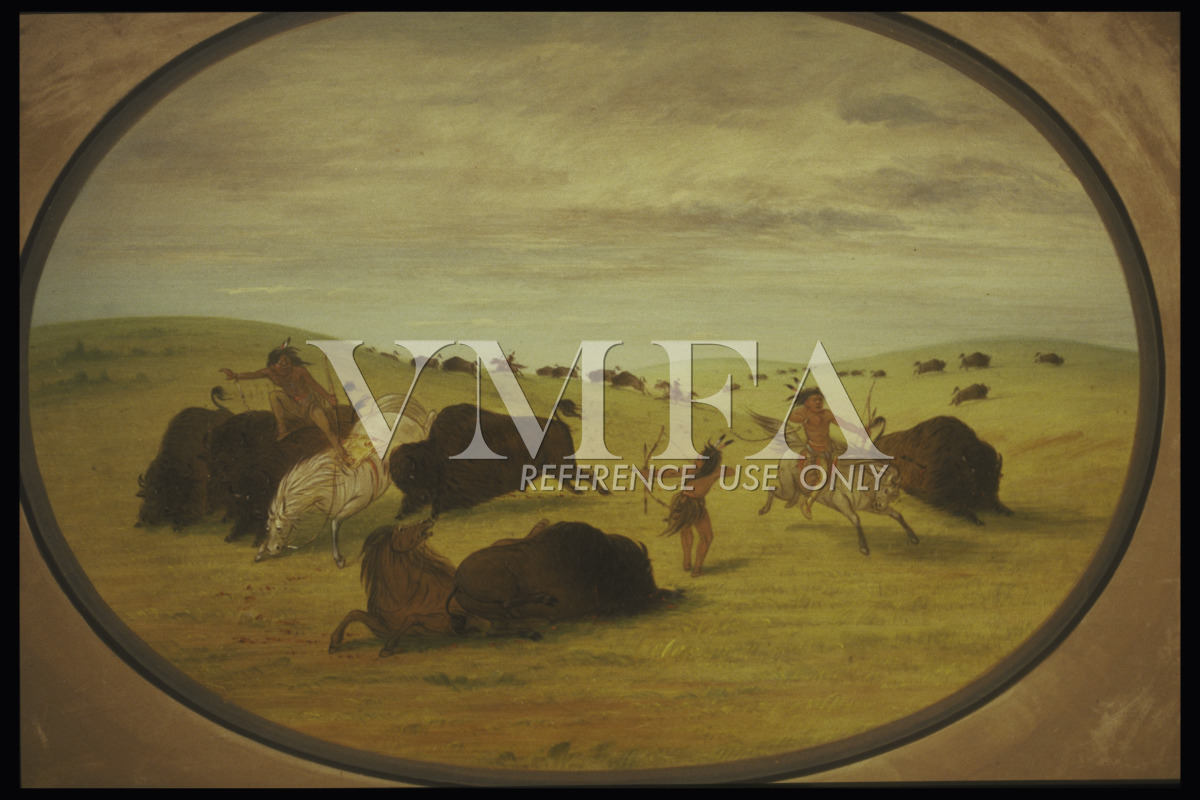
Buffalo Chase (Mouth of the Teton River) (Primary Title)
George Catlin, American, 1796 - 1872 (Artist)
In 1830, George Catlin made his first trip to the western frontier. He was intent on capturing the traditions, lifestyles, and portraits of the Native Americans who inhabited the region. For seven years, the self-taught artist and amateur ethnologist visited numerous tribes and painted nearly five hundred portraits and genre scenes based on his observations during his extensive travels.
In the same year that Catlin made his journey westward, the Indian Removal Act was signed by President Andrew Jackson, represented in the nearby sculpture by Clark Mills. This law enabled the forced removal of native tribes from their homelands in the South to the western outskirts of the nation. Catlin believed his paintings would serve as records of a vanishing way of life “for the benefit of posterity,” which over the course of the next century saw rapid increases in the Indian reservation system, encroaching settlement, and warfare.
More paintings by George Catlin are on view in the Mellon American Gallery on Level 3.
Some object records are not complete and do not reflect VMFA's full and current knowledge. VMFA makes routine updates as records are reviewed and enhanced.
